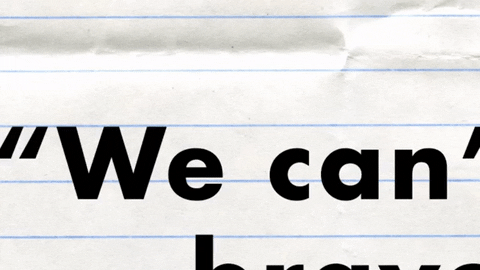In 2013, Rob Rhinehart shared the results of his dietary experiment with the world: he had stopped eating food and started living on a liquid diet he invented.
“I haven’t eaten a bite of food in 30 days, and it’s changed my life,” he said.
The words could have been the opening line of a thrilling sci-fi novel, but they were far from fictional. His blog post quickly went viral and transformed his test-tube meals into the growing food tech business he named Soylent (yes, like Soylent Green).
Over the past few days, the Soylent family has doubled in size. After two years of offering a single flavor in powdered and bottled form, Soylent finally launched two brand new products: Coffiest, a drinkable breakfast and coffee in one bottle, and Soylent Bar, a chewy, caramel-flavored snack bar boasting 12% of your daily nutrients.
Soylent calls itself intelligently designed food that’s engineered for greatness, but does it really live up to the hype? The startup’s mission is to eliminate the tedious, energy-intensive chore of preparing and procuring meals by replacing them with a single drinkable food that is as nutritious and sustainable as it is affordable and easy to prepare. Rhinehart claims that Soylent could contribute to solving the global problem of hunger and food security (no, it’s not just for tech hordes in Silicon Valley or financial analysts too busy doing the Lord’s work to cook themselves a proper meal.)
Are the lofty claims too good to be true?
Unlike the brightly-colored, multi-textured fruits and vegetables that surround it, Soylent is just a thick and chalky beige-colored drink made up of soy protein, algan oil, and isomaltulose (a dietary fiber and sweetener made from beets), plus all of the daily vitamins and minerals you need. The core ingredients have changed a bit over time, from rice protein and fish oil to the soy-based vegan formula it is now, but the flavor hasn’t improved much: it tastes like leftover cereal milk mixed with protein powder, synthetic sweetener, and extract of cardboard.
If the world is going to start drinking Soylent, it needs to taste better. Food isn’t just fuel, after all, even for people who can’t be bothered to eat it. Surely we don’t have to choose between eating healthy food that tastes good and losing hours every single day sweating over a stove. Has Rob ever heard of leftovers?
[quote position="left" is_quote="false"]Has Rob ever heard of leftovers? [/quote]
Compared with the previous two versions of Soylent, the new Coffiest (the namesake of an addictive substance featured in another sci-fi novel), fares a little better. “Don’t Skip Breakfast, Sip Coffiest,” is the breakfast meal replacer’s mantra. Its one-minute promotional video depicts a hard-working, early-rising farmer tossing bales of hay from the bed of his pick-up truck with a bottle of Coffiest tucked into his back pocket.
“I drink Coffiest, a complete breakfast and coffee in one convenient bottle. Mmm. Tastes like coffee,” he says.
While my day-to-day doesn’t relate well to a farmer who rises before 5 a.m. to sling hay, I was excited to try this coffee-breakfast hybrid. But if you’re expecting the first sip to taste anything like coffee, prepare for disappointment. While more flavorful than its predecessor, Coffiest tastes like artificially-flavored chocolate milk with a sprinkle of instant coffee and a heavy hit of protein powder. Its thick, chalky texture leaves a milky film in the back of my mouth when I swallow, which is an odd feeling since I haven’t had dairy in seven years. Still, I drank it for breakfast, sometimes lunch, and occasionally as a snack for three days straight.
Is it a meal or isn’t it?
On the back of the black case, next to the long list of synthetic ingredients, is a confusing disclaimer, “While not intended to replace every meal, Soylent can replace any meal.”
I wasn’t sure how much meal replacement was ideal, but after having Coffiest first as a late-night snack and then for breakfast the next morning, I was ravenous for real food by lunchtime. I wanted to rephrase the Coffiest tagline with my own inversion: Don’t Sip Breakfast, Skip Coffiest.
Not satisfied with just my experience, I sampled out the rest of my case of Coffiest to willing friends and acquaintances. One said he liked it, but was concerned about the high levels of soy. Another described the flavor as generally unpleasant, like glorified Muscle Milk that gave her a bellyache. One said that after only 2.5 hours after chugging the bottle, she was hungry and badly needed a real cup of coffee. “Someone please remove this feeling from my tongue,” was her final plea.
[quote position="full" is_quote="false"]Surely we don’t have to choose between eating healthy food that tastes good and losing hours every single day sweating over a stove.[/quote]
But the taste of Soylent products isn’t nearly the biggest letdown: Soylent boldly claims that it engineers affordable, complete foods that are convenient, healthy, and designed to provide maximum nutrition. Every single claim they make falls short when put to the test.
Are the nutrition claims real?
Soylent’s nutritional content looks pretty good on paper: the low-calorie meals have protein, fat, carbs, fiber, and 20% of the required daily vitamins and nutrients in every serving. But using it as a meal replacement gets tricky if you want to follow the USDA’s dietary recommendations. The average adult requires 2,100-2,700 calories per day, but each Soylent serving contains only 400-500 calories. That’s less than a ¼ of your daily needs. You would need to drink 4 to 6 bottles per day (depending on your gender) to stay energized, and when you multiply the intake of Soylent by this many servings, the daily amounts of protein, fat, and added sugar skyrocket.
On the Soylent Meal Plan, in order to meet your caloric requirements, you would consume roughly 5 times the recommended amount of fat, more than double the amount of protein, and three times as much sugar as advised; yet your intake of fiber would be less than half the recommended amount (unless you opt for the powder). This hardly constitutes as the healthy, complete food that’s going to save the world.
Now, how about those dollar signs?
In addition to the inflated amounts of sugar, fat, and protein, the cost of Soylent increases dramatically if you want to consume enough calories to make it through the day. If you’re a woman, you can squeak past on around $15/day on the bottles and under $9 if you want to blend up the powder yourself. But the higher calories needed for men mean a heftier price tag. Again, the powder is cheapest, coming in around $10 per day, but if you want the convenience of a to-go bottle with a splash of coffee, it’s going to cost over $20 each day.
Soylent targets young professionals with disposable income, and the product requires an upfront investment. It’s not available in any stores, and can only be purchased by the case from Soylent’s website or Amazon. From smiling millennials picnicking in a park, to the sharp businesswoman who wants time for boxing after a long day’s work, to happy couples hiking in the woods, Soylent ads call out to people with the “work hard, play hard” mentality who view cooking food as a hobby, not a daily routine.
Compared to diet programs like Sakara Life and meal kits like Blue Apron and Purple Carrot, $20 a day isn’t all that expensive. But the difference is that those businesses send you real, fresh, chewable food. Food with varying smells, colors, and tastes. They don’t claim to be cheap, while Soylent’s central claim is its affordability.
If you could feed the hungry, would you give them Soylent?
Soylent has proudly partnered with the World Food Programme to “spread good nutrition” with each case of Coffiest and Soylent Bar that you buy. Share it with your friends, get a discount, and donate meals to children in need. Their goal is to donate 1 million meals by the end of 2016. Sounds amazing, right?
It is, until you realize how much this donated meal costs. It’s nowhere near as expensive as Soylent, costing $0.25. Soylent donates just 1 meal per 12-bottle case, or roughly 2 cents per bottle. Point being, you’re going to need to drink a lot of Soylent to donate 1 million meals. And what does a WFP meal look like, you may ask? It isn’t Soylent.
According to their site, a school meal “isn’t necessarily a meal. It can be breakfast, a snack, such a high-energy biscuit, or a ration of food or cash that the children can take home to their families.” Imagery in a promotional WFP video shows women tilling a field, a man’s hands holding a bowl of deeply-hued greens, and fluffy, steaming grains and cooked vegetables being scooped into empty tins, then served to schoolchildren.
[quote position="full" is_quote="false"]And what does a WFP meal look like, you may ask? It isn’t Soylent.[/quote]
Again, none of these resemble Soylent’s ethos or the product that it sells. In the world of Soylent, we lose out on so much diversity in our food and in the way we use cooking, eating, and sharing to connect with each other. In the world of Soylent, there’s little time or space for cultural celebrations of food, little room to learn the history it imparts, and no reason to preserve seasonal knowledge or agroecology. Daily commensality becomes a weekly or monthly event (unless you can imagine gathering around the family dinner table set with white bottles of Soylent).
Our food system needs a transformation, but the dystopic appetite of Soylenters is not the answer. Plus, I’m sure no farmer in their right mind is going to trade fresh food grown on their farm for an artificial bottle of sort-of coffee.















 Visualization of a black holeImage via Canva
Visualization of a black holeImage via Canva

 Speaking in public is still one the most common fears among people.Photo credit: Canva
Speaking in public is still one the most common fears among people.Photo credit: Canva muhammad ali quote GIF by SoulPancake
muhammad ali quote GIF by SoulPancake

 Let us all bow before Gary, the Internet's most adventurous feline. Photo credit: James Eastham
Let us all bow before Gary, the Internet's most adventurous feline. Photo credit: James Eastham Gary the Cat enjoys some paddling. Photo credit: James Eastham
Gary the Cat enjoys some paddling. Photo credit: James Eastham James and Gary chat with Ryan Reed and Tony Photo credit: Ryan Reed
James and Gary chat with Ryan Reed and Tony Photo credit: Ryan Reed


 Rock deterioration has damaged some of the inscriptions, but they remain visible. Renan Rodrigues Chandu and Pedro Arcanjo José Feitosa, and the Casa Grande boys
Rock deterioration has damaged some of the inscriptions, but they remain visible. Renan Rodrigues Chandu and Pedro Arcanjo José Feitosa, and the Casa Grande boys The Serrote do Letreiro site continues to provide rich insights into ancient life.
The Serrote do Letreiro site continues to provide rich insights into ancient life.